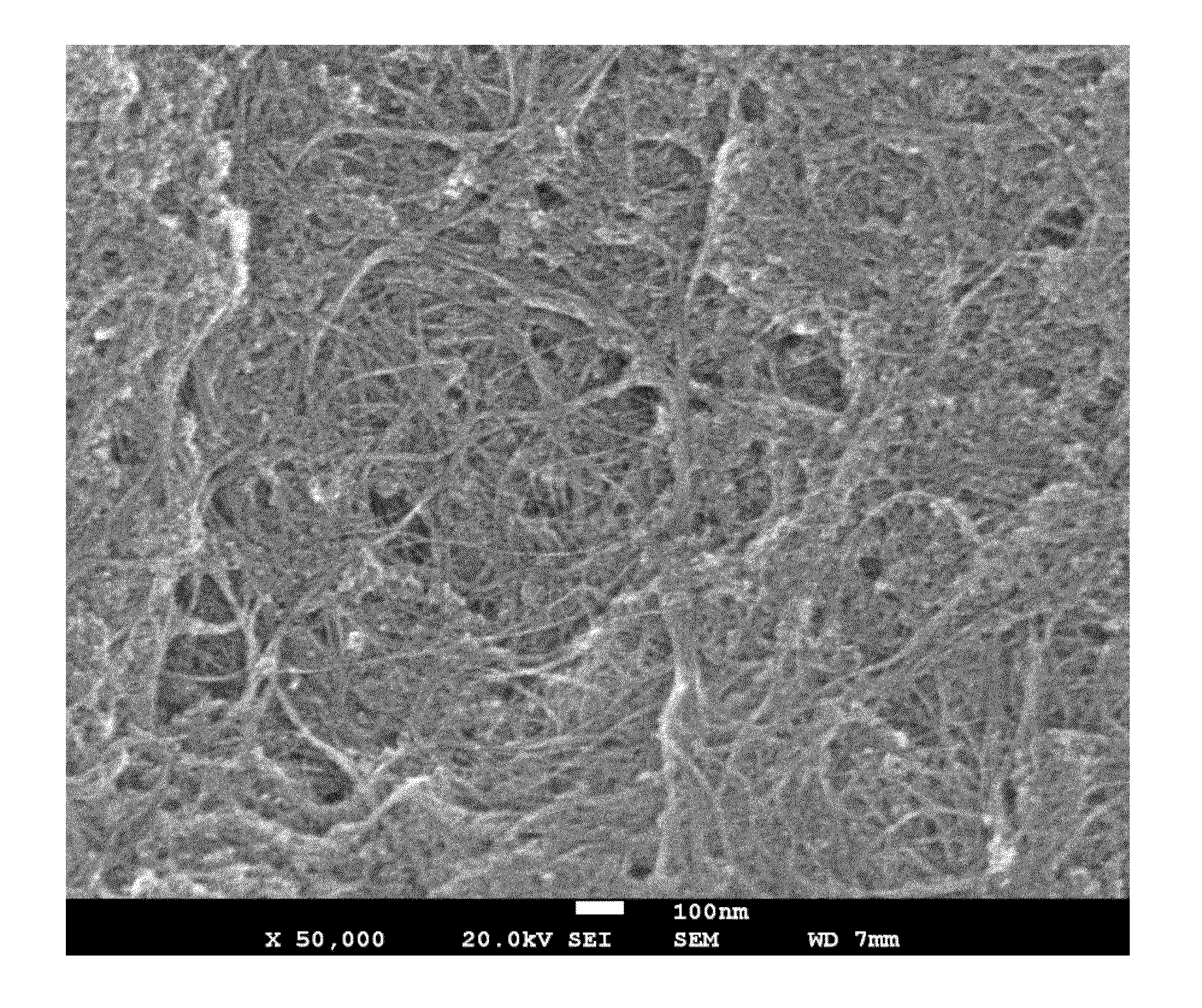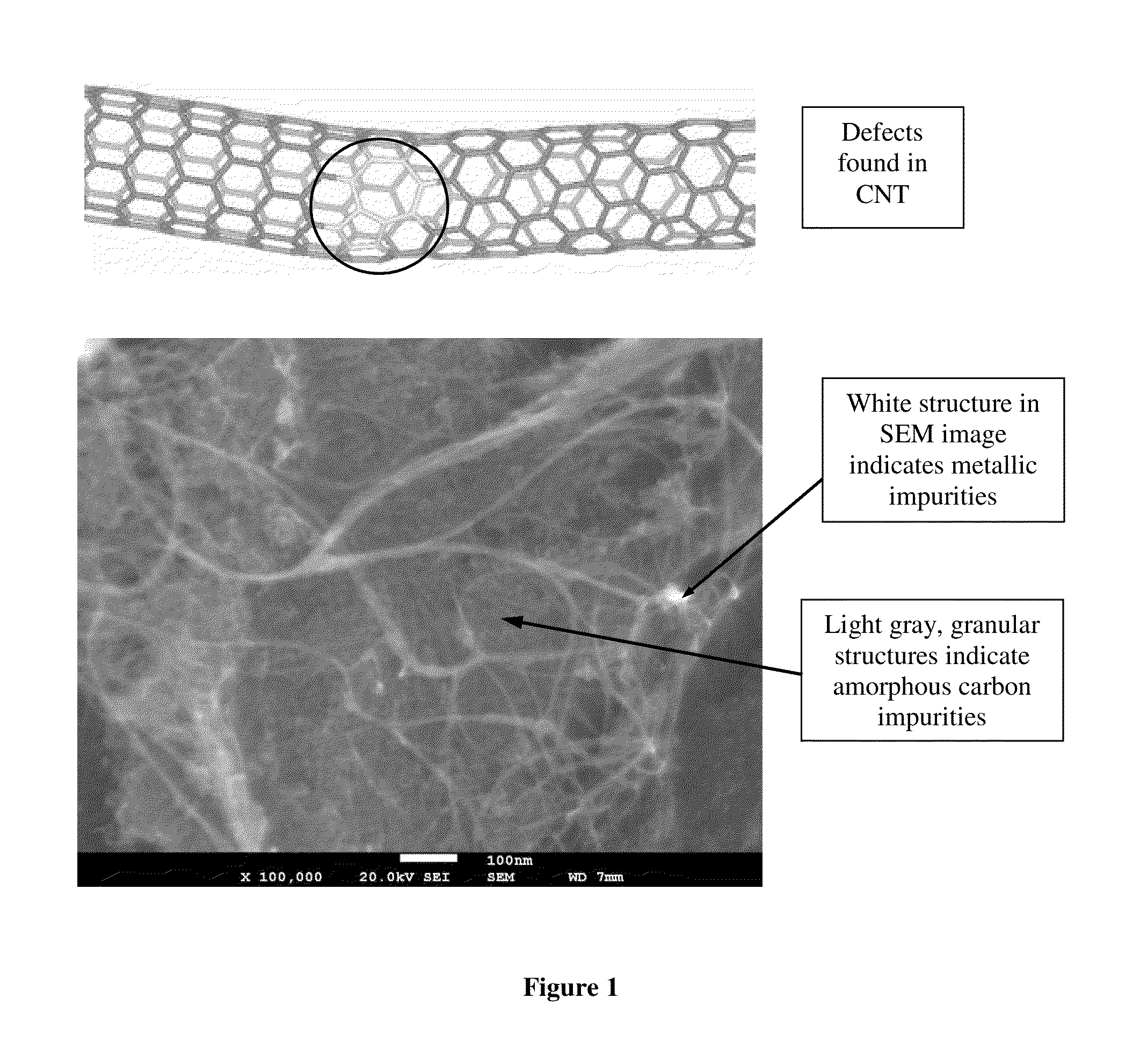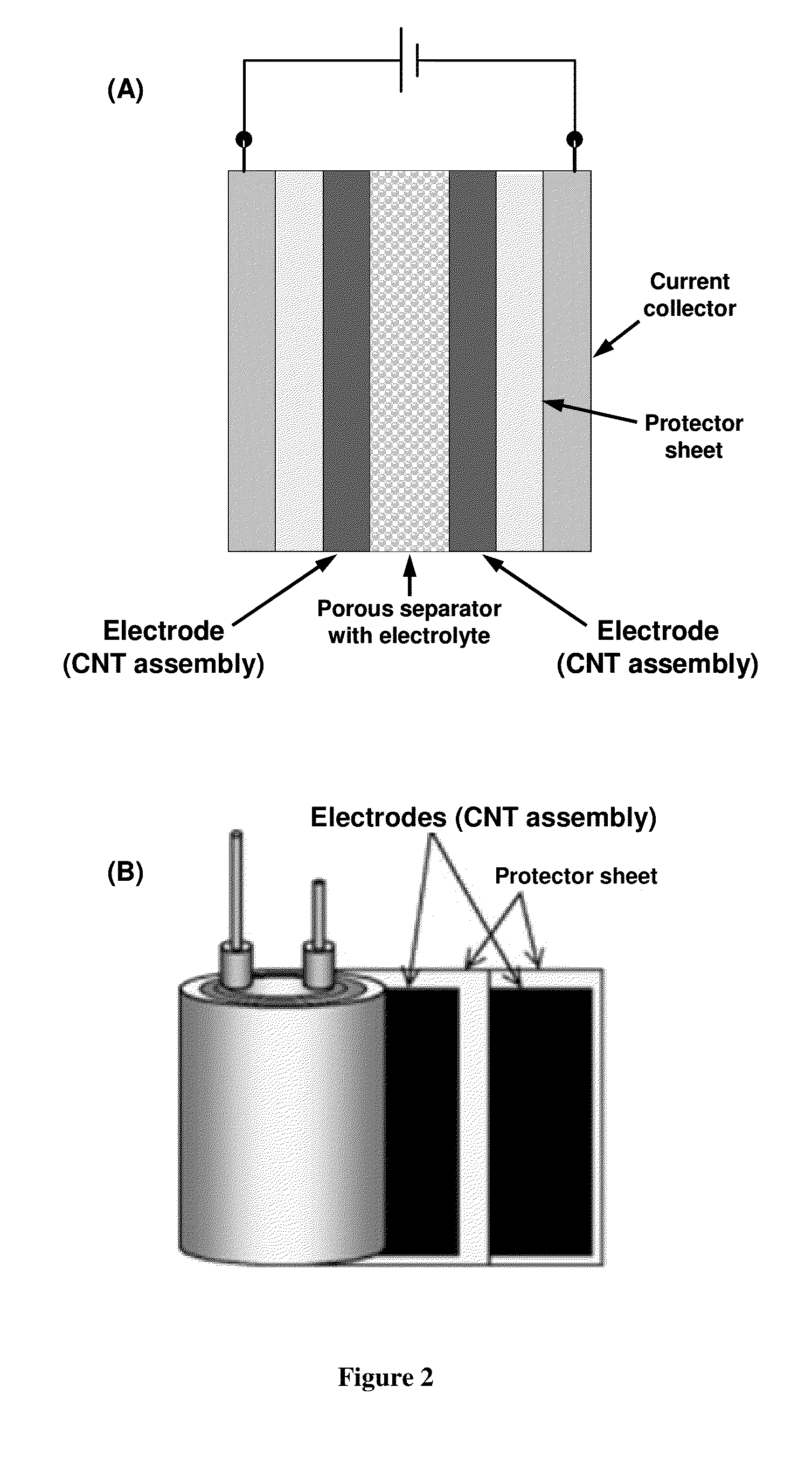Method of purifying carbon nanotubes and applications thereof
a carbon nanotube and purification technology, applied in the field of purification methods of carbon nanotubes, can solve the problems of generating amorphous, affecting the cnt, and the absolute intensities of the g and d band peak are not particularly relevan
- Summary
- Abstract
- Description
- Claims
- Application Information
AI Technical Summary
Benefits of technology
Problems solved by technology
Method used
Image
Examples
example 1
As-Received SWCNT Thermally Treated at 750° C. and 1000° C.
[0078]Dry particles of single-wall carbon nanotubes (SWCNT) were acquired from Thomas Swan and Co., Ltd (Consett, County Durham, United Kingdom) under the product name “Elicarb SW.” Nine samples of SWCNT were randomly taken from the as-received material and each was measured for Raman G / D ratio using a LabRam ARAMIS Raman Microscope manufactured by Horiba Jobin Yvon, Edison, N.J., with a 532-nm (green) laser. The average G / D ratio was about 4.9 with standard deviation of 1.3 (27%). A representative Raman spectrum of the as-received Thomas Swan SWCNT material is shown in FIG. 3. Three-point Lorentzian peak-fitting was used to determine the G band intensity (i.e., the area under the G band portion of the spectrum), and single-point peak fitting was used to determine the D band intensity (i.e., the area under the D band portion of the spectrum).
[0079]About 500 mg of the as-received SWCNT particles were placed in a quartz boat a...
example 2
SWCNT Mixed and Dispersed in Solvent, Dried, and Heat-Treated at 200° C.
[0084]250 mg of as-received SWCNT and 250 ml of isopropyl alcohol (IPA) (2-propanol, catalog #A416, Fisher Scientific, Pittsburgh, Pa.) were combined in a beaker. The beaker's contents were mixed using a high shear mixer (Model Me-100LC, Charles Ross & Son Company, Hauppauge, N.Y.) for 30 minutes at 10,000 RPM and an additional 10 minutes at 5,000 RPM, while the beaker was ultra-sonicated in a water bath (Model: FS7652, Fisher Scientific). After the 40-minute high shear mixing was completed, ultra-sonication was continued for an additional two hours.
[0085]Then, the contents of the beaker were transferred to five separate 9-cm diameter Kimax® glass dishes, with each dish containing about 50 ml solvent and about 50 mg SWCNT. Prior to dispensing the solvent-SWCNT mixture into the dishes, each dish was first rinsed with 10 ml of a hydrophobic (HP) treatment solution for about 5 seconds, then dried at room temperatur...
example 3
SWCNT Dispersed in IPA and annealed at 500° C.-1000° C.
[0090]About 250 mg of SWCNT were mixed and dispersed in about 250 ml IPA and dried at 50° C., then heat treated at 200° C. for 3 hr in air, as described in Example 2. The 200° C.-treated SWCNT had an average Raman G / D ratio of 11.9.
[0091]About 50 mg each of the 200° C.-treated SWCNT were then annealed at 500, 600, 750, and 1000° C. for 12 hr using the same quartz boat, quartz tube furnace, purge gas, and heating and cooling rates as described in Example 1. The average Raman G / D ratios of the annealed SWCNT are shown in Table 3.
TABLE 3Effect of 12-hr annealing temperatureon G / D ratio of IPA-dispersed SWCNT.AnnealingRamantemperatureG / D RatioNone (200° C.-treated)11.9500° C.39.1600° C.76.9750° C.139.71000° C. 130.0
[0092]FIG. 7 shows the Raman spectrum of the IPA-dispersed SWCNT after annealing at 750° C. FIG. 8 (A) shows the Raman spectra of SWCNT mixed in IPA, dried, and annealed at different temperatures. FIG. 8 (B) shows the var...
PUM
| Property | Measurement | Unit |
|---|---|---|
| temperature | aaaaa | aaaaa |
| temperature | aaaaa | aaaaa |
| time period | aaaaa | aaaaa |
Abstract
Description
Claims
Application Information
 Login to View More
Login to View More - R&D
- Intellectual Property
- Life Sciences
- Materials
- Tech Scout
- Unparalleled Data Quality
- Higher Quality Content
- 60% Fewer Hallucinations
Browse by: Latest US Patents, China's latest patents, Technical Efficacy Thesaurus, Application Domain, Technology Topic, Popular Technical Reports.
© 2025 PatSnap. All rights reserved.Legal|Privacy policy|Modern Slavery Act Transparency Statement|Sitemap|About US| Contact US: help@patsnap.com



